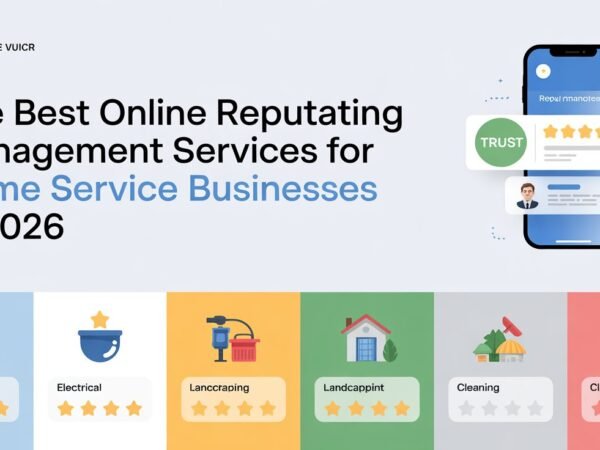In 2024, the digital marketing landscape is more dynamic than ever, and e-commerce brands must embrace new strategies to stay competitive. With consumers increasingly turning to online platforms for shopping and the advent of advanced tools like AI, brands can no longer afford to rely on outdated tactics. This article will highlight the top five digital marketing strategies to help e-commerce businesses thrive in 2024. From cross-channel advertising to data-driven campaigns, these strategies are essential for growth and customer engagement in today’s fast-paced digital world.
Cross-Channel Advertising: Reaching Your Customers Everywhere
As digital platforms proliferate, e-commerce brands must proactively expand their reach to a broader audience by advertising across multiple channels. In 2024, relying on just one platform—Facebook, Google, or Amazon—will no longer suffice. Cross-channel advertising involves running campaigns across platforms like Meta Ads (Facebook and Instagram), Google Ads, and Amazon Ads, a strategic move to maximize visibility and engagement.
Why Cross-Channel Advertising Works
Different platforms offer distinct advantages, making it essential to tailor your approach. For example, Google Ads is ideal for targeting users who are actively searching for products. Meta Ads (Facebook and Instagram) allow for hyper-targeted audience segmentation based on users’ behaviors and interests. By utilizing multiple channels simultaneously, brands can reach customers at different stages of their buying journey—from awareness to purchase.
Running ads on multiple channels ensures that your brand stays visible to potential customers across their digital footprint, increasing the chances of conversions. Effective cross-channel advertising requires an integrated strategy that ensures cohesive messaging across all platforms, ensuring the customer’s seamless experience regardless of their platform.
AI-Powered Advertising for Enhanced Targeting and Personalization
AI is no longer just a buzzword—it’s a powerful tool that empowers e-commerce brands to enhance targeting and create personalized ad experiences. Brands increasingly use AI-powered advertising solutions to analyze customer data, including purchasing behaviors, browsing history, and demographic information, to create highly tailored ad campaigns that resonate with the target audience.
Why AI-Powered Advertising Works
AI’s power lies in its ability to quickly process vast amounts of data to find patterns and trends. With AI, marketers can predict future behaviors and adjust their strategies accordingly. By leveraging these insights, brands can create personalized ads that appeal to their customers’ needs and preferences. This increases the likelihood of conversions and enhances customer satisfaction and loyalty.
AI also helps automate many aspects of ad creation and optimization. For example, AI tools can generate high-performing ad copy and creatives, ensuring your ads are data-driven and engaging. This approach saves time and resources while increasing the likelihood of higher engagement and conversion rates.
Agencies like GoMarble leverage AI-driven solutions such as predictive analytics, automated bidding, and dynamic creative optimization, providing insights and recommendations for improving ad performance. Whether through creative testing, budget optimization, or competitor analysis, AI helps brands run more effective and profitable campaigns.
Video Marketing: The Power of Visual Content
Video continues to reign as one of the most effective content formats in digital marketing. E-commerce brands that leverage video marketing can be confident in enjoying better engagement, higher brand awareness, and increased conversions. Whether showcasing a product’s features, telling a brand story, or sharing customer testimonials, video is a powerful tool for connecting with potential customers.
Why Video Marketing Works
Videos are more engaging than static images or text-based ads. They capture attention quickly and can convey a lot of information in a short amount of time. This makes them particularly effective in e-commerce, where customers must see products in action to fully understand their value. Video also helps build trust and credibility, as it gives a behind-the-scenes look at your brand and products.
Video Marketing Tips
To make the most out of video content, ensure it’s optimized for the platform it’s being shown on. For example, square videos work well on Instagram, while YouTube videos benefit from a landscape format.
Keep the videos short, engaging, and concise, focusing on your product’s core value proposition. Using AI tools to create, edit, and optimize videos can speed up the process and help ensure that your content is tailored to your audience’s preferences. E-commerce businesses can combine video ads with other strategies, like cross-channel advertising, to ensure they engage their audience at all touchpoints.
Data-Driven Campaigns: Maximize ROI with Analytics
Data is essential in today’s digital marketing world. E-commerce brands that use data to inform their strategies will likely see positive results. Data-driven campaigns allow marketers to decide where to allocate budgets, which ads to run, and which methods to pursue. The key is to analyze data regularly and make real-time adjustments to optimize campaign performance.
Why Data-Driven Campaigns Work
By measuring key performance indicators (KPIs) like return on ad spend (ROAS), click-through rates, conversion rates, and customer acquisition costs, brands can identify which campaigns are working and which aren’t. This information lets marketers quickly adjust their strategies, test new approaches, and improve ad performance.
Advanced tools can help e-commerce brands easily track and analyze their campaigns. These tools provide valuable insights into which ads are performing well and which ones need improvement, assisting brands in maximizing ROI and avoiding wasting ad spending on underperforming campaigns.
Retargeting and Remarketing: Stay Top of Mind
Not every visitor to your website or ad campaign will convert on their first interaction. Retargeting and remarketing are essential strategies for re-engaging potential customers who have shown interest in your brand but didn’t complete a purchase. By delivering targeted ads to these customers, e-commerce brands can increase the likelihood of conversion.
Why Retargeting Works
Retargeting allows you to show ads to users who have previously interacted with your website or ads, reminding them of your products and encouraging them to complete their purchases. These ads can be highly personalized based on the user’s previous behaviors, such as showing them the product they viewed but didn’t buy.
Remarketing Tips
Be mindful not to overwhelm your customers with too many ads, leading to frustration. Instead, create compelling, value-driven ads that offer special discounts or incentives. These ads should remind customers of your products and provide them with a reason to return and complete their purchase. AI-driven tools can help you optimize your retargeting efforts, ensuring you reach customers at the right time.
Conclusion
As e-commerce evolves in 2024, brands must stay ahead by adopting advanced digital marketing strategies. From cross-channel advertising to data-driven campaigns, AI-powered tools, and retargeting techniques, numerous ways exist to engage customers and drive sales. Implementing these strategies will improve your brand’s visibility, maximize ROI, and create long-lasting customer relationships.
E-commerce brands can achieve scalable growth and profitability by combining the right strategies and leveraging powerful marketing tools.
Do Read: How Can Professional Writing Boost Business Success Rates?













